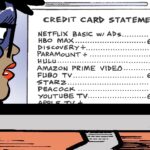Mammoth Media, a media and entertainment network aimed at teens and millennials, wants to do for apps what Viacom did for TV.
“Viacom has Nickelodeon, MTV, Comedy Central – program options and content based on demographics,” said Peter Szabo, Mammoth’s CRO and head of partnerships. “We’re taking the same approach with different monetization, and instead of channels, we have our apps.”
Mammoth was incubated within Science, Inc., an LA-based tech startup studio with a preternatural instinct for backing hot commodities. (It was one of the earliest investors in Dollar Shave Club, for example.)
After raising a $13 million Series A led by Greylock Partners with participation from Science earlier this year, Mammoth set its sights on creating content for young audiences. Three of the most popular apps under its umbrella – teen polling app Wishbone, storytelling app Yarn and live trivia app Arena – regularly turn up in the App Store’s top 50 across categories.
“We saw how much time people spend on their smartphones and realized that no one was really entertaining them in a mobile-first way with a network-oriented approach,” Szabo said. “Netflix, Hulu and Amazon Prime do long-form video, Scopely creates games, but we see people looking to be entertained with much shorter-form content.”
AdExchanger spoke with Szabo about why “micro-content” is like TV for a new generation of viewers – and why forward-thinking broadcasters have nothing to fear.
AdExchanger: What do you know about how teens and millennials consume video content that the traditional TV players either don’t understand or seem to have trouble activating on?
PETER SZABO: That question is why I’m here at Mammoth. Content is evolving. The networks and studios know this. But their model for getting people to tune into a show or visit a movie theater is making digital ads that are just a version of something they made for TV.
There’s a glut of content out there. If you can entertain people with opportunities that are micro enough in form, they can enjoy them and then move on with the rest of the day – and then come back over and over again.
Everyone is competing against “good enough and free,” the YouTubization of content. On YouTube, you can get almost anything you want at any time of day, but it’s not serialized or episodic. You can scroll and refresh Facebook again and again, but it’s empty content calories.
Through the user testing and focus groups we do, we’ve found that people still crave stories with some kind of cadence. When we combine that idea – a very traditional TV idea – with mobile-first and mobile-centric content, it works quite nicely.
How are you putting that idea into action?
Our app Yarn is a good example. The stories are interactive and presented like you’re reading a text message exchange, but it’s really telling a story. The average user comes to Yarn four times a day and spend two minutes at a time. We’ve shifted to calling these micro-moments, the small chunks of time when someone might be waiting for a friend or standing in line at Dunkin’ Donuts.
We’re matching a new type of content with a new type of thinking and building a replicable model around it.
What is the replicable model?
There’s a lot we do behind the scenes to test out ideas with a smaller audience first. We’ve determined the lifetime value of our users and we acquire new users based on that modeling using a mixture of paid media and organic. If it’s working, we quickly apply more resources.
How do you develop the content?
We have an in-house creative team that does most of it. It’s not easy to write for Yarn – there’s a staccato rhythm, and you’ve got to be quick and punchy while also getting your point across – and we’ve hired writers who are good at doing that.
Because the cost is low to produce this type of content, we have a data-driven writing room where we can test content and see what seems to be working for a fraction of a percent of what a studio might pay for a typical pilot. It’s something we’re actually helping studios with.
How else are you working with traditional networks?
We’ve been approached by several studios and TV networks interested in what they can do by combining their content with our content. They’re exploring ideas like using Yarn to bridge between seasons, to try and find a new audience for a new show or to reinvigorate old shows that maybe aren’t on the air anymore but have a built-in audience that’s still interested.
AMC was the first to do something like this for their show “Into the Badlands.” Yarn content is a complement to what’s happening on TV and a way to expand the story. There’s an immersive version, the TV version and a secondary version that can add to the experience.
How do you monetize?
We have a trio of options – subscriptions, in-app purchases and advertising – and we apply the one that makes the most sense for the particular user experience. Wishbone is primarily ad-supported with display and native, Yarn is subscription-based and for our live trivia game, Arena, there are subscription bundles or you can buy extra lives.
Do you consider your apps to be like TV channels in a network?
If we can get Yarn onto someone’s home screen, they’ll keep coming back or, shall I say, tuning in, a bit like a traditional TV show. With an app, as opposed to the mobile web, you can build behavior because it’s a destination.
We also have a network effect where, in some cases, there’s an up to 30% crossover between some of our apps in terms of audience. The Wishbone audience embraced Yarn, for example, and they continue to use it. And now users of Wishbone and Yarn are starting to use Arena. It’s not that different from how Viacom might pass its audience from MTV to VH1. The parallels are uncanny.















